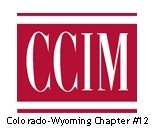FROM THE LinkedIn GROUP – REAL ESTATE AND MOBILITY
Talking Headways Podcast: Innovation at LA Metro
“LA Metro CEO Phil Washington joins the podcast this week to discuss new developments in Los Angeles transit. Listen in and hear about Metro’s Office of Extraordinary Innovation, the potential for autonomous buses, micro-transit pilot programs, and new fare media, as well as the links between affordable housing production and transit.”
https://usa.streetsblog.org/2018/05/17/talking-headways-podcast-innovation-at-la-metro/
The state of self-driving car laws across the U.S.
“The most popular topic, with 11 state laws, is exemptions to following distance rules that allow for truck platooning. Drivers typically maintain an appropriate following distance from other vehicles to account for speed, road conditions, and human reaction times when traffic comes to a stop. With wireless communication, a line of trucks can accelerate and brake over much shorter distances. Closer following distances in a truck platoon lowers air resistance on the following vehicles, with fuel savings that add up quickly for multiple trucks hauling cargo over long distances. The popularity of platooning laws suggests a wider focus on commercial applications of autonomous vehicle technology on the state level.”
https://www.brookings.edu/blog/techtank/2018/05/01/the-state-of-self-driving-car-laws-across-the-u-s/
Elevation – how drones will change cities
“Architecture will change dramatically as the ground floor entrance is replaced by rooftop landing, parking and recharging zones and deliveries arrive via specially constructed portals on the sides of buildings.”
https://www.youtube.com/watch?v=Z0osJnSWxt8
“Unbundling” parking costs is a top way to promote transportation options
“In the county – right across the Potomac River from Washington, D.C. – parking appears to be overbuilt, with parking utilization only reaching capacity in four of the 32 buildings studied in Arlington County Residential Building Study: Aggregate Analysis Update. The average maximum use was 78 percent, meaning more than 20 percent of parking supply is excess.”
https://mobilitylab.org/2018/05/31/unbundling-parking-costs-is-a-top-way-to-promote-transportation-options/
Madrid Takes Its Car Ban to the Next Level
“Even on a continent where many cities are scaling back car access, the plan is drastic. While much of central Madrid consists of narrow streets that were never suitable to motor vehicles in the first place, this central zone also includes broad avenues such as Gran Via, and wide squares that have been islands in a sea of surging traffic for decades. The plan is thus not just about making busy central streets more pleasant, but about creating a situation where people simply no longer think of bringing their cars downtown.”
https://www.citylab.com/transportation/2018/05/madrid-spain-car-ban-city-center/561155/
Lime sees little wheels as route-scootin’ biggie
“Lime, known for its Aurora bikeshare program, is giving the people of Denver what they never knew they wanted: a fleet of shared, dockless electric scooters that cost a buck each to unlock via an app and 15 cents per minute to zoom around…The city is concerned about the use, placement and number of scooters operating on Denver’s sidewalks, particularly in high-pedestrian traffic zones, Denver Public Works department spokeswoman Nancy Kuhn said in an emailed statement. The city was only notified of Lime’s plans a few days ago.
http://digital.olivesoftware.com/Olive/ODN/DenverPost/shared/ShowArticle.aspx?doc=TDP%2F2018%2F05%2F26&entity=Ar00603&sk=D6C8C315&mode=text
On the Road Again: How Advances in Transportation are Shaping the Future of Real Estate
“San Francisco’s on-transit apartments commanded a 21% higher asking rent in 2013
than those that were located off-transit, but shortly after reaching this level, and
just two years after the launch of Uber, this premium began to decline. Once Uber
and Lyft’s carpooling services began in 2014 the decline accelerated, and the rent
premium for on-transit apartments now sits at around 15%.”
https://www.metlife.com/content/dam/metlifecom/us/homepage/metlife-investments/investment-management/forms-library/real-estate-market-insights/MIM-Real-Estate-On-the-Road-Again-White-Paper-MLIA.pdf
Rapid Evolution – Bridging the last mile…
“Retailers would love to bring industrial warehouse and fulfillment centers closer to the rooftops. However, several barriers exist before than can happen. Typically, empty big box stores aren’t equipped with the features that would be needed to convert space to a warehouse and distribution use, such as high ceiling heights, loading docks, and truck doors. “Those are really important pieces of the puzzle when you are designing a distribution center or warehouse that you obviously don’t have in a retail location,” Bufe says. Zoning is another big stumbling block.”
https://www.ccim.com/cire-magazine/articles/2018/05/rapid-evolution/?gmSsoPc=1
Apartment Developers Try to Figure Out the Parking Equation in a World with Fewer Cars
“In suburban areas, leading apartment developers like The NRP Group often build 1.6 to 1.8 parking spaces for every apartment. “Location is absolutely the key,” says Carolyn Mendel, vice president of development for The NRP Group. “In the suburbs, people love to have easy access to the commuter rail, but more often than not, residents who commute via train will still have a car to get around on weekends.”
In many urban areas that provide more transit options for residents NRP builds far fewer parking spaces—typically 0.5 to 1.5 per apartment. “We are even starting to see apartment projects in the urban core building without any parking at all, which is a relatively new phenomenon for this market [Boston],” says Mendel.
These needs are changing rapidly, especially as options like Uber and bike-share programs change how urban residents get around, Mendel notes.”
http://www.nreionline.com/multifamily/apartment-developers-try-figure-out-parking-equation-world-fewer-cars
MOBILITY
Transportation Solutions reports that Neighborhood Mobility Hubs are emerging around the country as a way to connect public transit with surrounding neighborhoods. These hubs are a collection of transportation services that help travelers make their “first and last mile” trips between transit stations, home, work or other desired destinations. Creating a Neighborhood Mobility Hub can be as easy as placing bikeshare, carshare, shuttles or ridesharing (i.e., Uber or Lyft) in close proximity to a transit station. Wayfinding and safe pedestrian facilities are included to connect the stations to these services. Transportation Solutions is exploring options for creating Neighborhood Mobility Hubs in southeast Denver and Glendale. In 2018, we are continuing our focus on the University of Denver and Colorado Light Rail Stations as emerging mobility hubs. Starting this summer, the University of Denver will begin to pilot a micro-transit service that connects the campus with the rail station. Additionally, DU is preparing to launch a dockless bikeshare pilot soon. Transportation Solutions is also studying a potential micro-transit service connecting Cherry Creek with nearby rail stations.
http://www.transolutions.org
Bike to Work Day (BTWD) 2018 is just around the corner and we can’t wait to ride with everyone! Did you know that Transportation Solutions can be your resource in planning or promoting BTWD or a BTWD Station? We will be working with local organizations to host several BTWD Stations, including at the following locations: Colorado Center, Cherry Creek North, Creekside Park, and University of Denver. BTWD Stations offer free food, swag, bicycle maintenance, and more for bicycle commuters on BTWD. If you are a community member or employer who would like to help promote, participate, or host a station for BTWD 2018, please contact Robby Long at rlong@transolutions.org. If you plan to bike to work on June 27th, don’t forget to register beginning May 1st (the earlier you register, the more likely you are to win one of the many amazing prizes this year).
https://biketoworkday.us/
And check out the RTD Bike-n-Ride program to learn how to combine your bike ride with bus or train.
http://www.rtd-denver.com/Bike_n_Ride.shtml
RTD will join other public transit agencies across the nation for Dump the Pump Day on Thursday, June 21. As a crucial part of the solution to the nation’s economic, energy, and environmental challenges, this annual campaign sponsored by APTA, encourages people to find alternate modes of transportation, instead of driving their cars. By choosing public transit, you can save money, conserve gasoline, and help reduce harmful greenhouse gases. Calculate your gas savings using the public transportation fuel savings calculator.
https://www.publictransportation.org/Pages/default.aspx
On April 19, 2018, the Colorado State Senate passed the “Safety Stop” bill, which provides common language for local governments to adopt rules allowing bicyclists to treat stop signs as yield signs and stop lights as stop signs when the coast is clear. The bill is expected to be signed into law by the Governor soon! Transportation Solutions is excited that communities around Colorado will now have the option to legislate safer behaviors for people riding bikes.
https://denver.streetsblog.org/2018/04/19/bill-to-standardize-bicycle-safety-stop-rules-across-colorado-awaits-hickenloopers-pen/
Denver City Council Member Kendra Black reports that our two Southmoor Station Visioning meetings held in February and April were a great success with hundreds of participants sharing their ideas. Neighbors want local, neighborhood-feel, and suburban/urban with restaurants, community spaces, and housing choices like townhomes. Residents do not want big box stores, national chains or office buildings. During the planning process, community members will further develop a community vision in a way that will direct future development.
https://www.denvergov.org/content/denvergov/en/community-planning-and-development/planning-and-design/Neighborhood_Planning_Initiative.html
We are proud to announce the completion of 3 public art projects: the art bus shelter displaying student art, the community tile mural and the art bus bench. These projects brighten this stretch of Hampden and offer a safe and pleasant wait for students and commuters. Thank you to our incredible partners: TJ PTO, TJ faculty and art students, Denver Arts & Venues and RTD for making this project happen. Attend the Ribbon Cutting Ceremony Thursday, June 7, 4 pm, bus shelter on south side of Hampden, west of Ivanhoe. Check out the new bench on the north side of Hampden at Holly painted by TJ students.
Challenging the car-centric behavior of SE Denver, No Drive Friday is our campaign to reduce car traffic on Fridays. Use alternative transportation like biking, walking or public transit! Southeast neighbors have joined the movement, committing to drive-free Fridays. Are you up for the challenge? Let us know by sharing your photos on social media with the hashtag #NoDriveFriday or by emailing tate.carpenter@denvergov.org
Located at I-25 & Colorado Blvd., the Colorado Center is a hub for entertainment and office space, all within walking distance of the light rail station. Cigna announced they will move their regional headquarters to the recently completed Tower 3, bringing more than 1,000 employees to the area. Future plans include a food hall with local chef-driven concepts, a live performance venue and outdoor plaza that will open in early 2019.
https://livecoloradocenter.com/about/
ATTAINABLE HOUSING
Denver has a housing crisis. Guess who’s got 5,000 acres and a moral mission?
“I had an intern last summer start to go county by county through ownership data — and what we found were thousands of undeveloped acres that are owned by faith communities,” said Nathan Hunt, an organizer with the Interfaith Alliance of Colorado…Many churches bought cheap land at the urban fringe, then found themselves enveloped by the latest wave of development, making their land more valuable and accessible. In other cases, faith leaders saw the growth of “megachurches” in the 1980s and ’90s and decided to buy up acreage, hoping that their congregations would boom too. “So they bought 15 acres, and that didn’t happen, and that’s fine,” Hunt said, “but now they’re mowing a whole lot of property and don’t know what to do with it.” But, increasingly, faith leaders are looking for new ways to use their land. In all, Hunt already has identified 16 local churches and one mosque that are interested in developing their property for affordable housing purposes.
https://www.denverite.com/whos-got-whole-bunch-land-nothing-churches-51577/?mc_cid=71b811bbf2&mc_eid=71955de632
REAL ESTATE
Denver City Council Member Mary Beth Susman reports that the Green Roofs Initiative – Public Comment period closes soon. The task force has a working draft proposal available for public review and comment. The task force believes the proposal respects the spirit of the initiative and achieves many climate benefits. We also believe this compromise proposal will lead to more flexibility for how developers and builders can comply with the initiative compared to how it is currently written. View the draft proposal and cost analysis at:
https://www.denvergov.org/content/dam/denvergov/Portals/696/documents/Green%20Roofs%20Review%20Task%20Force/Green_Building_Policy_Proposal_Draft.pdf
https://www.denvergov.org/content/dam/denvergov/Portals/696/documents/Green%20Roofs%20Review%20Task%20Force/Green_Building_Proposal_Cost_Analysis.pdf
The City is ready to begin the first 2017 General Obligation Bond (GO Bond) projects in Denver’s neighborhoods. The proposed list of first round projects totals $193 million and includes bike lanes, improved roads, bridges, park enhancements, and major construction of cultural facilities and Denver Health.
https://www.denvergov.org/content/dam/denvergov/Portals/344/documents/2017GoBond/Document_FirstIssuanceList_01052018.pdf


















